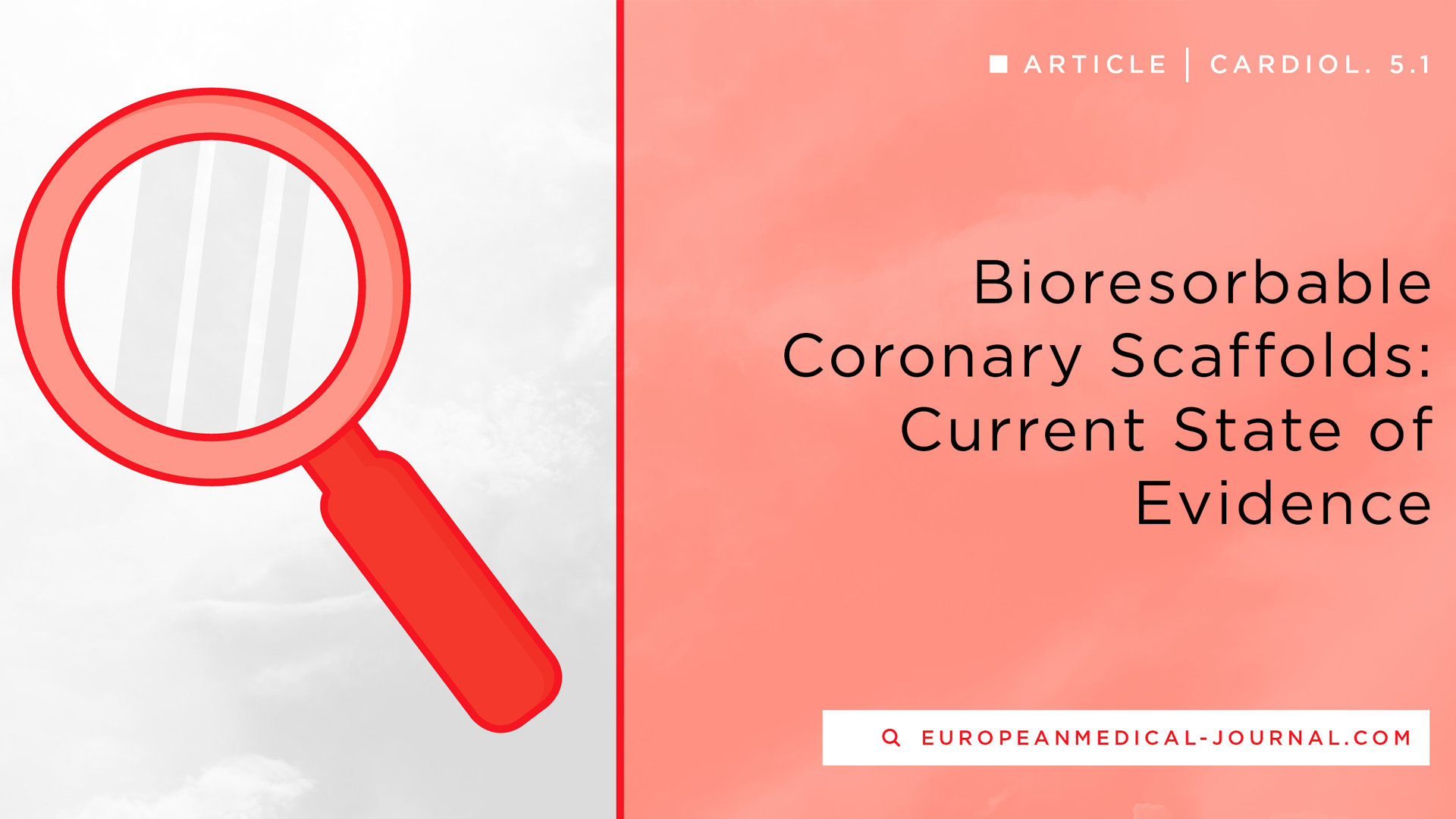×
Il semble que vous utilisiez une version obsolète de internet explorer. Internet explorer n'est plus supporté par Microsoft depuis fin 2015. Nous vous invitons à utiliser un navigateur plus récent tel que Firefox, Google Chrome ou Microsoft Edge.
Bioresorbable Coronary Scaffolds: Current State of Evidence
European Medical Journal
Abstract
Second-generation drug-eluting stents are currently considered the standard of care in patients undergoing treatment for coronary artery disease with percutaneous coronary intervention. Despite significant improvements in stenting technology and stent material over the past three decades, the concern that a permanent metallic prosthesis within the coronary vasculature can serve as a trigger for stent-related adverse events, mainly stent thrombosis and in-stent restenosis, still persists. In order to overcome the disadvantages of drug-eluting stents there has been a robust development in the field of bioresorbable coronary scaffolds (BRS). These devices aim to provide temporary scaffolding to restore vessel patency and, after serving its purpose, fully degrade and thus allow restoration of vasomotion along with luminal enlargement. The initial experience with bioresorbable scaffolds in low-risk patients presenting with simple lesions was satisfying and generated optimism among interventional cardiologists by promising better patient outcomes. However, the unrestricted use of these devices in patients presenting with a higher baseline risk and more complex lesions came at the cost of alarmingly high rates of adverse cardiac events, especially the late device thrombosis. Although its non-inferiority compared to metallic everolimus-eluting stents was formally met in the clinical trials, there was a clear trend towards an increased occurrence of myocardial infarction and device thrombosis during the first year after device implantation, which persisted even at long-term follow-up raising concern on the future of BRS. This review article discusses the development, design, clinical data, and future directions in the field of BRS.
*Sunny Goel 1, Shiv Raj 2, Abhishek Sharma 3, Umesh Gidwani 4, Robert Frankel 1, Jacob Shani 1
1. Department of Cardiology, Maimonides Medical Center, Brooklyn, New York, USA
2. Department of Internal Medicine, Maimonides Medical Center, Brooklyn, New York, USA
3. Division of Cardiology, Department of Medicine, State University of New York Downstate Medical Center, Brooklyn, New York, USA
4. Zena and Michael A. Weiner Cardiovascular Institute, Mount Sinai Hospital, New York City, New York, USA
*Correspondence to maverickmedico1985@gmail.com
